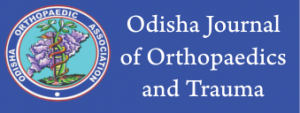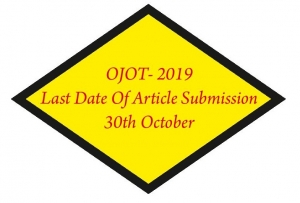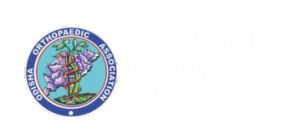The significance of peer review in orthopaedic publications
Vol 01 | January 2020 | page: 26-27 | Sundar Narayan Mohanty, Saswat Samant, Udayan Das, Bhabani Shankar Mohapatra, Debobrata Saha, Nishant Gupta
DOI- 10.13107/ojot.2020.v41i01.008
Authors: Sundar Narayan Mohanty [1], Saswat Samant [1], Udayan Das [1], Bhabani Shankar Mohapatra [1], Debobrata Saha [1], Nishant Gupta[1]
[1] Department of Orthopaedics, Hi-Tech Medical College & Hospital, Bhubaneswar, Odisha India.
Address of Correspondence
Dr. Satya Ranjan Patra,
Hi-Tech Medical College, Bhubaneswar, Odisha India.
E-mail: drsatyarp@gmail.com
Abstract
The purpose peer review is to enable authors to reach high & accepted standards during the dissemination of research data by the scrutinization of their research data by experts of the same field. Peer review also has its own share of demerits and points for criticism. Various new modifications have been proposed yet a more robust system is yet to be fully developed. It is expected that we make the most of this method to ensure that our fellow orthopaedicians get the most valid and filtered high-quality results from our research..
Keywords: Peer review, manuscript, orthopaedics, publications
References
1. Kelly J, Sadeghieh T, Adeli K. Peer Review in Scientific Publications: Benefits, Critiques, & A Survival Guide. EJIFCC. 2014;25(3):227–243. Published 2014 Oct 24.
2. Tippmann S. (2014). “New Avenues For Peer Review: An (Audio) Interview With Eva Amsen.” Peer Review Watch.Web. http://peerreviewwatch.wordpress.com/2014/04/05/new-avenues for- peer-review-an-audio-interview-with-Eva-amsen
3. Meadows A. (2013). “A New Approach to Peer Review – an Interview with Keith Collier, Co-founder of Rubriq.” Wiley Exchanges. Web. Retrieved July 07, 2014 from http://exchanges.wiley.com/blog/2013/09/17/a-newapproachto- peer-review-an-interview-with-Keith-collierco-founder-of-rubriq/
4. Ware M. (2008). “Peer Review: Benefits, Perceptions and Alternatives.” PRC Summary Papers, 4:4-20.
5. “Peer Review 101.” (2013). The American Physiological Society. Web. Retrieved from https:// www.the-aps.org/mm/SciencePolicy/Agency-Policy/ Peer-Review/PeerReview101.pdf
6. Schley D. (2009).”Peer Reviewers Satisfied with System.”Times Higher Education. Web. Retrieved, from http://www.timeshighereducation . co.uk/408108.article
7. “Peer Review”. (2014). Elsevier Publishing Guidelines. Web. Retrieved June 24, 2014, from http://www.elsevier. com/about/publishing-guidelines/peer-review
8. Hall SA, \Vi!cox AJ. The btl’ of epidemiologic manuscripts: a study of papers submitted to Epidemiology. Epidemiology 2007: 11->:262-265.
| How to Cite this Article: Mohanty S N, Samant S, Das U, Mohapatra B S, Saha D, Gupta N. | The significance of peer review in orthopaedic publications. | Odisha Journal of Orthopaedics and Trauma | January 2020; 01: 26-27. https://doi.org/10.13107/ojot.2020.v41i01.008 |
(Abstract Text HTML) (Download PDF)





